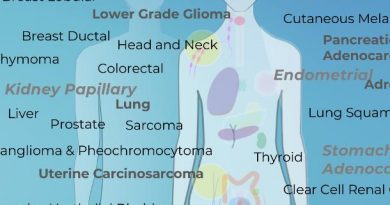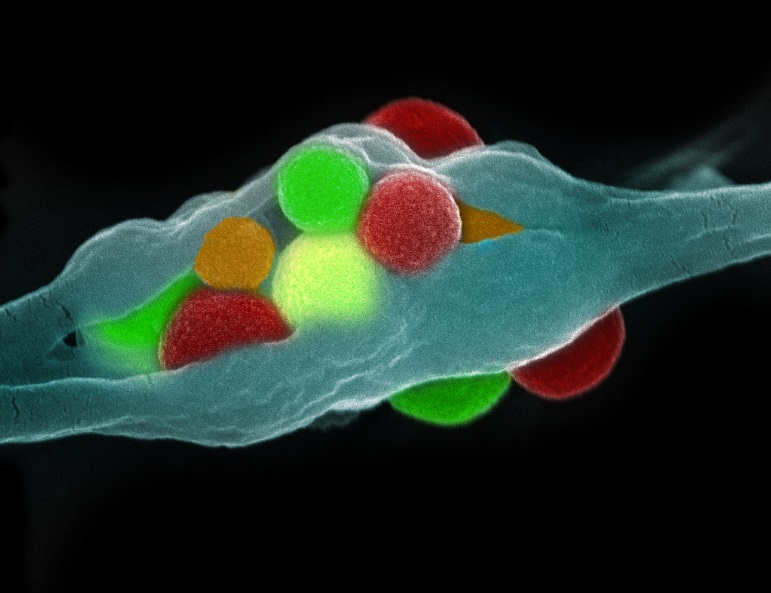Gene therapy offers potential treatment for osteoarthritis
Osteoarthritis is a multifactorial degenerative joint disorder that poses a major challenge for treatment. This condition currently affects 28 million people in the United States and most of them rely on symptomatic relief to manage joint inflammation and chronic pain. There are no current disease-modifying therapies for osteoarthritis, but researchers at Baylor College of Medicine have identified a potential strategy for treating the disorder from both a symptomatic and disease-modifying perspective by using gene therapy.

“Osteoarthritis is a type of arthritis that occurs when flexible tissue at the ends of bones wears down. Treating osteoarthritis requires the sustained delivery of a drug in order to be effective, which gene therapy can accomplish,” said Dr. Brendan Lee, chair and Robert and Janice McNair Endowed Chair and Professor in the Department of Molecular and Human Genetics at Baylor. “We’ve known from previous studies that the interleukin-1 pathway plays a role in inflammation and is a potentially effective target in osteoarthritis. Nevertheless, further research into therapies involving the interleukin-1 receptor antagonist has been inhibited by the short half-life of the protein in the body.”

To address the issue of limited availability of interleukin-1 receptor antagonist (IL-1Ra), a protein that impedes the inflammatory nature of the interleukin-1 pathway, the research team developed a helper-dependent, adenovirus-mediated gene therapy to enable the long-term expression of IL-1Ra, thereby resulting in a potential sustained symptomatic and disease-modifying therapy for osteoarthritis.
Animal models provide encouraging results
“Essentially, we developed a gene therapy candidate that can be injected directly into the affected joint to potentially provide a sustained and regulated expression of therapeutic proteins within that particular joint while aiming to avoid unrelated toxicity,” Lee explained. “We then applied this therapy to mice and saw significant improvement in pain parameters and cartilage preservation in the face of osteoarthritis stimulated by injury.”
Based on the encouraging results of the mouse study, Lee’s lab founded a company called GeneQuine, which licensed the technology used in the study from Baylor.
From mice, the researchers moved on to a large-animal model, working with GeneQuine to test the therapy in the carpal joint of horses, which closely mirrors the size and cartilage makeup of the human knee joint. Again, the results revealed joint preservation, improved range of motion and decreased inflammation.
“The findings of this study are very significant, as they pave the way to clinical testing. GeneQuine licensed this technology from Baylor in the early stages and was able to develop it further and attract the interest of Flexion Therapeutics, which acquired the program for application in patients and plans to take the therapy to the clinical setting next year, pending successful GLP(good laboratory practice) toxicology studies,” said Dr. Kilian Guse, former postdoctoral fellow in Lee’s lab at Baylor, current CEO and co-founder of GeneQuine, and a consultant to Flexion Therapeutics. “It will be very exciting to see the results of the clinical trial, as this has the potential to become the first-ever disease modifying therapy for osteoarthritis.”
If this treatment decreases pain and inflammation and preserves the joint, there is the potential to both improve symptoms and delay or reduce the need for joint replacement surgery.
“This preclinical data suggests an encouraging approach for joint therapy, and we look forward to seeing this therapy brought into human clinical trials and will continue to study the potential for combining different therapies to slow or halt the progression of osteoarthritis using this gene therapy platform,” Lee said. “It has been very rewarding to watch this project develop from the lab to potential clinical development.”
Find all the details of this study in the journal Arthritis and Rheumatology.
See a full list of authors and funding sources.



